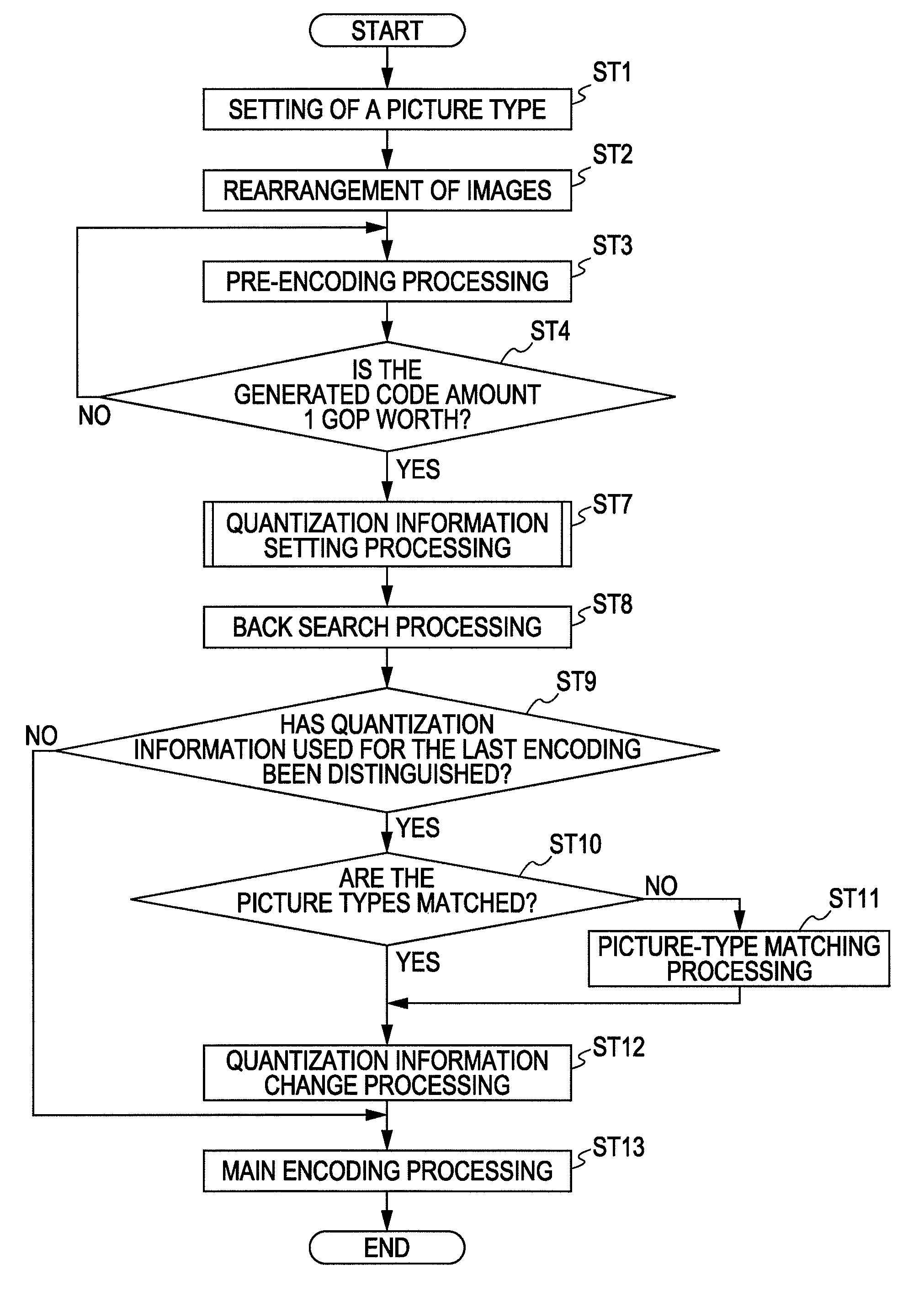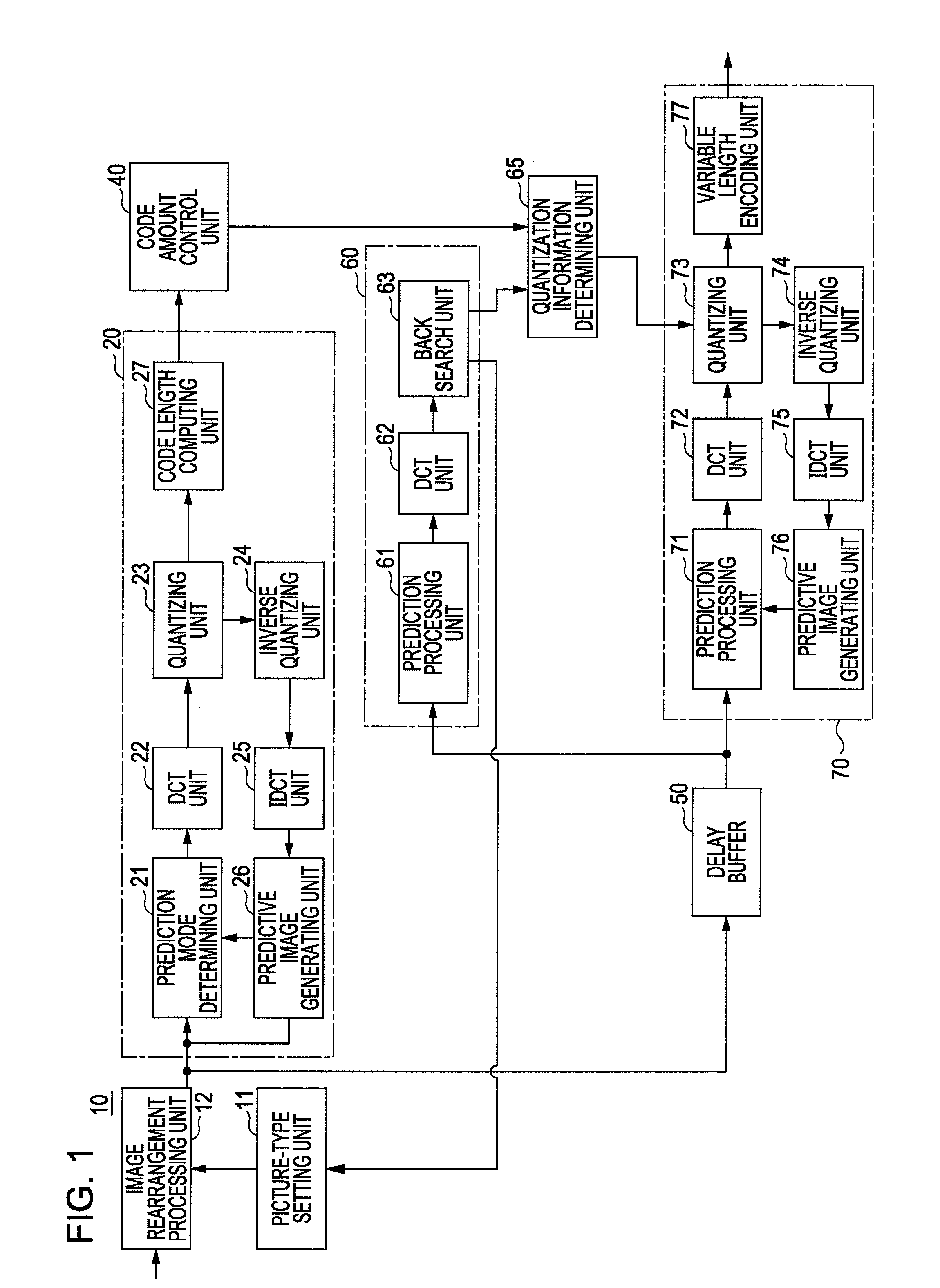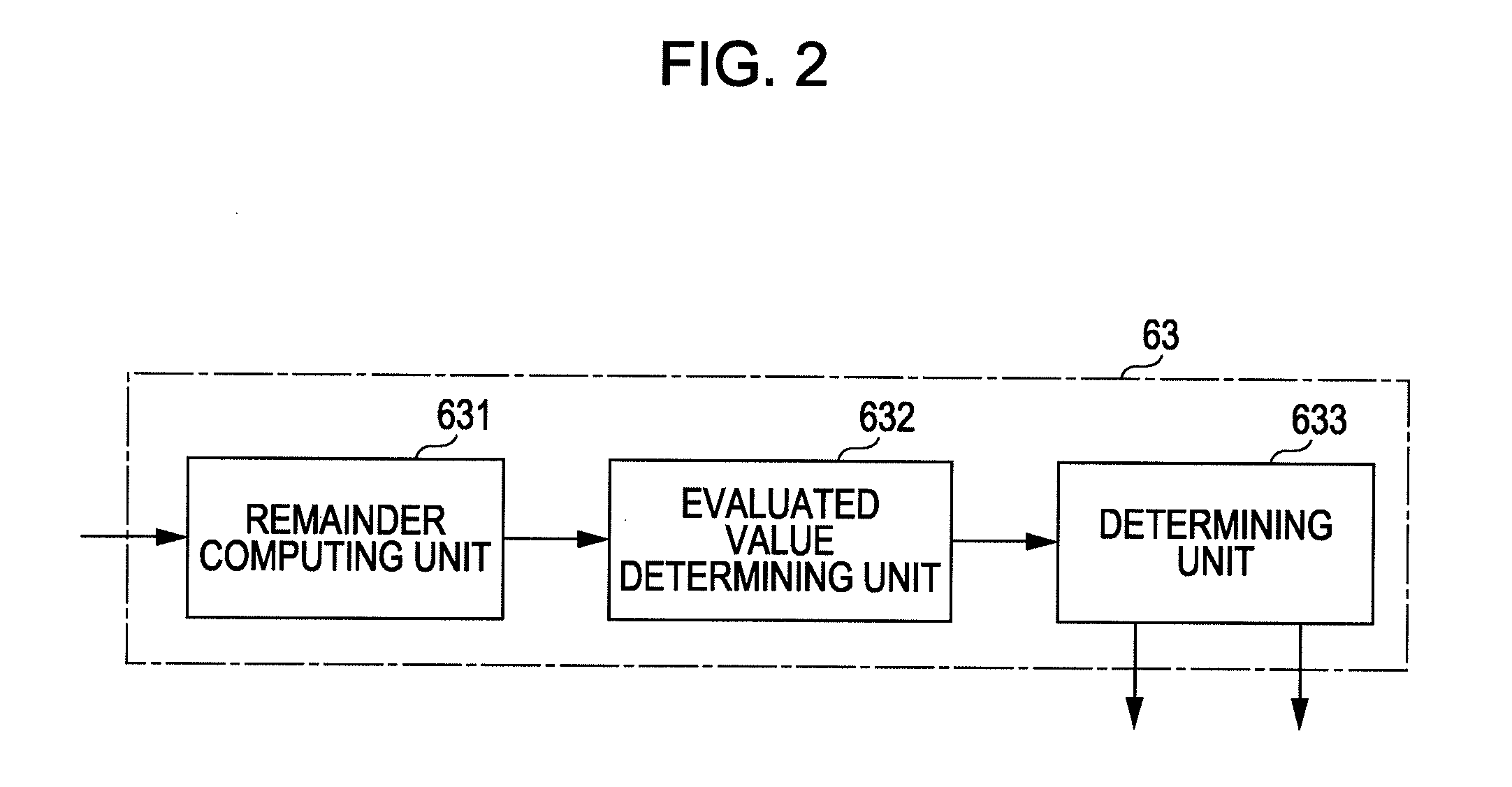Image encoding device and image encoding method
a technology of image encoding and encoding method, which is applied in the direction of instruments, electrical appliances, computing, etc., can solve the problems of increasing the image quality of the entire image, and achieve the effect of reducing the image quality deterioration
- Summary
- Abstract
- Description
- Claims
- Application Information
AI Technical Summary
Benefits of technology
Problems solved by technology
Method used
Image
Examples
first embodiment
2. Operation of First Embodiment
[0079]Next, the operation of the first embodiment will be described. FIG. 5 is a flowchart illustrating the operation of the first embodiment. Note that FIG. 5 illustrates processing of 1 GOP.
[0080]In step ST1, the image encoding device 10 performs setting of a picture type. The image encoding device 10 sets a picture type to each frame of the image data at the picture-type setting unit 11 in accordance with a GOP (Group of Picture) configuration, and proceeds to step ST2.
[0081]In step ST2, the image encoding device 10 performs rearrangement of images. The image encoding device 10 rearranges the image data at the image rearrangement processing unit 12 from the display sequence to the encoding sequence based on the picture type set at the picture-type setting unit 11, and proceeds to step ST3.
[0082]In step ST3, the image encoding device 10 performs pre-encoding processing. The image encoding device 10 performs encoding of the image data at the pre-enco...
second embodiment
4. Operation of Second Embodiment
[0138]Next, the operation of the second embodiment will be described. FIG. 14 is a flowchart illustrating the operation of the second embodiment. Note that the processing corresponding to the operation of the image encoding device illustrated in FIG. 5 will be denoted with the same step number.
[0139]In step ST1, the image encoding device 10a performs setting of a picture type, and proceeds to step ST2. In step ST2, the image encoding device 10a performs rearrangement of images. In step ST3, the image encoding device 10a performs the pre-encoding processing. In step ST4, the image encoding device 10a distinguishes whether or not the generated code amount calculated in the pre-encoding processing has reached 1 GOP worth. In the event that the generated code amount calculated at the pre-encoding unit 20 has reached 1 GOP worth, the image encoding device 10a proceeds to step ST7, and in the event that the generated code amount has not reached 1 GOP worth...
PUM
 Login to View More
Login to View More Abstract
Description
Claims
Application Information
 Login to View More
Login to View More - R&D
- Intellectual Property
- Life Sciences
- Materials
- Tech Scout
- Unparalleled Data Quality
- Higher Quality Content
- 60% Fewer Hallucinations
Browse by: Latest US Patents, China's latest patents, Technical Efficacy Thesaurus, Application Domain, Technology Topic, Popular Technical Reports.
© 2025 PatSnap. All rights reserved.Legal|Privacy policy|Modern Slavery Act Transparency Statement|Sitemap|About US| Contact US: help@patsnap.com



